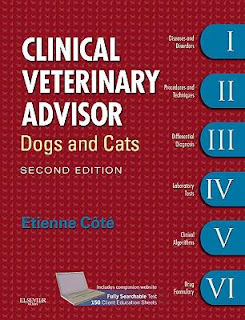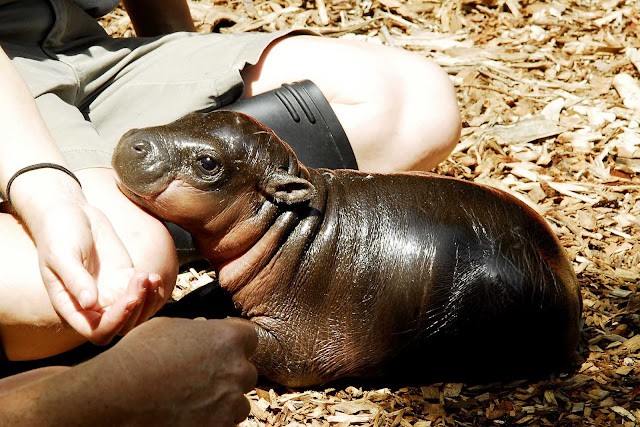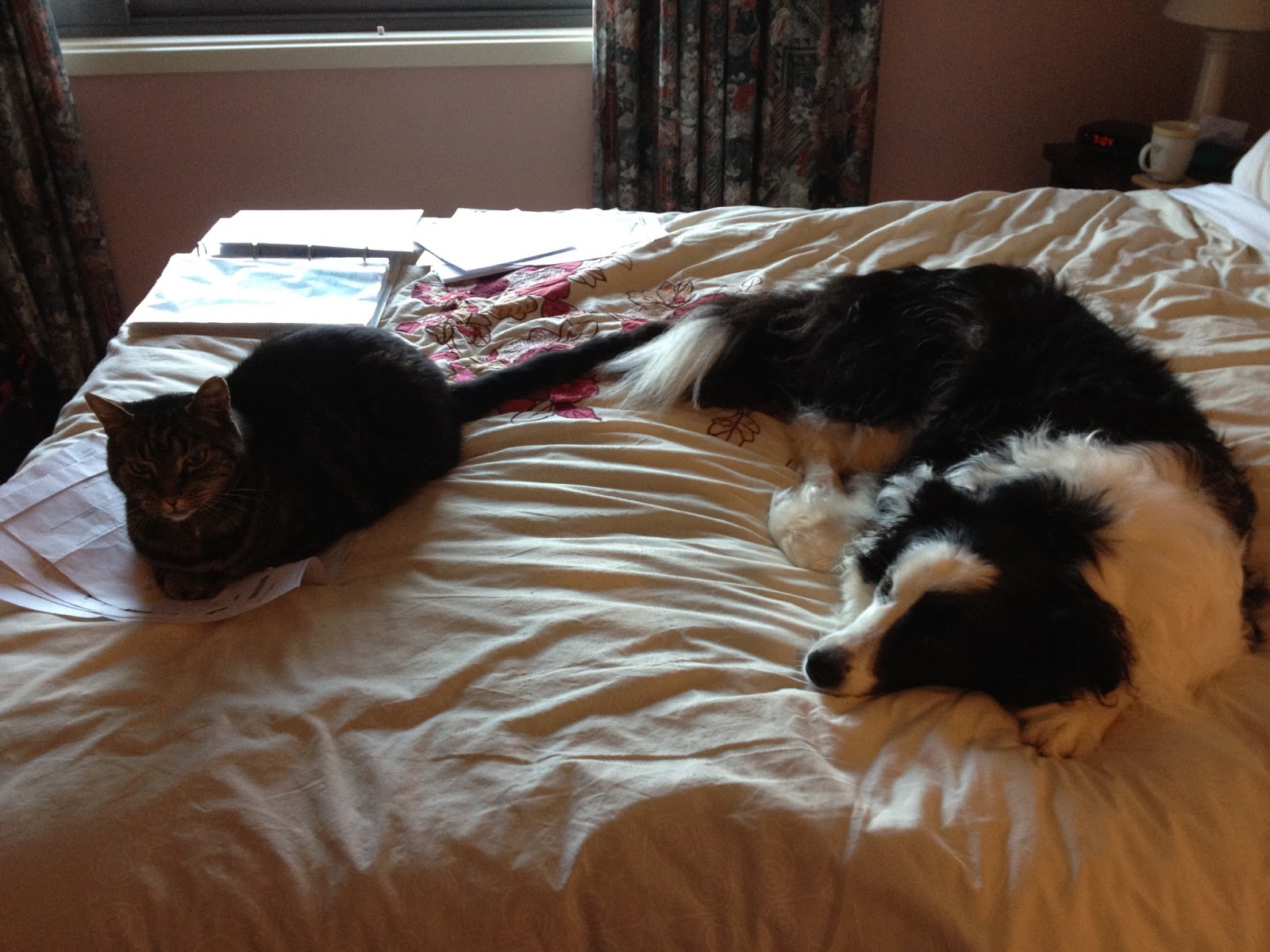I'm often asked (truly - I must look like a librarian) which are my favourite small animal veterinary textbooks. Well, I love a good book and its hard to narrow down the choices. Aside from the "staples" (Nelson & Couto, Ettinger, Slatter etc), below are some of the veterinary textbooks relating to small animal practice that I have found the most useful, in no particular order.
100 Top Consultations in Small Animal General Practice, Wiley Blackwell.
Authors: Peter Hill, Sheena Warman, Geoff Shawcross
Why this book?
* Because common things occur commonly, it is helpful to have a book that considers the most 100 common types of scenarios seen in companion animal practice (ie no room for Zebras here).
* It organises sections by general signs (eg inappetence and anorexia) and specific illnesses (the dog with demodicosis).
* The chapters are concise but cover the most important points.
* Unlike so many textbooks it provides advice on how to proceed if the patient does not recover, when referral should be considered and potential low cost options where available - reflecting the reality of general practice.
* Peter Hill's intro on diagnostic and therapeutic approaches in small animal general practice is astute, practical and well written.
* It emphasises sustainable practice with appendices on rational use of antibiotics and glucocorticoids.
Where to get it: The Centre for Veterinary Education is having a sale on this title as we speak. Click here for more info, including a full list of chapters.
Differential Diagnosis in Small Animal Medicine, Blackwell Publishing.
Author: Alex Gough.
Why this book:
* Common things may occur commonly, but uncommon things occur more commonly than we think - and, in real life, patients (especially older patients) often have multiple problems. Gough's brief introduction to this book also provides one of the most concise yet helpful introductions to the problem based approach to medicine. I recommend this to students who aren't sold on the idea (pattern recognition will only take you so far - and if you don't consider something a diagnostic possibility in the first place you might never get to that diagnosis).
* It provides a comprehensive list of most differentials for most presenting problems we will see in a very accessible source.
* It provides differentials for historical signs, nonspecific signs and physical examination findings as well as radiographic, sonographic and clinicopathologic findings. So for example, if I have a cat with vomiting and elevated ALT I can look up both of these problems and get a list of all of the potential differentials. No one human being (except one blessed with a photographic memory) can recall all of these possibilities, so this is a really handy book.
* The ideal resource when taking the problem based approach, ie when investigating an unusual presentation of a common condition or an unusual/uncommon condition.
Success in Veterinary Practice: Maximising Clinical Outcomes and Personal Wellbeing, Wiley Blackwell.
Author: Bradley Viner
Why this book:
* The author is a thoughtful practitioner who considers the bigger picture. He says "Whilst financial success can provide a short term basis for our motivation and well-being, long term satisfaction is only likely to be achieved if there is harmony between our personal values and goals and our professional objectives, and we are content with the place that our profession occupies within our lives."
* Because although it is about practice management, this is really a book about who we are as vets - what are our values and how can we uphold these in our professional lives; how do we objectively measure and improve our clinical outcomes and how can we improve satisfaction with our work. Don't think I've yet met a vet who doesn't contemplate these issues!
* It promotes reflective veterinary practice, which you can read about here.
* Among many brilliantly written sections, it contains the following passage:
"...it is inevitable that at certain moments in our professional lives we will go through periods when we become disillusioned. The values that we upheld as important will have been subsumed by the realities of everyday veterinary life: not every case will involve overcoming a complex diagnostic challenge that saves the life of the animal involved and results in the undying gratititude of its owner. In fact, such cases are few and far between. Just as many may involve the frustration of not being able to take a diagnosis far enough due to practical constraints, or an owner that simply does not appreciate what is being done for them. Between these two extremes, the vast majority will be entirely commonplace, and superficially at least, unchallenging.
It is this routine that will make up the bulk of our working lives. Much of the clinical and management advice currently available has been written to help us cope with the extraordinary. That is perfectly valid: we need to know how to tackle the difficult clinical cases: just as we need to know how to handle an unhappy and aggressive client. But as challenging as such instances may be, they are not the main factors that contribute to long-term professional dissatisfaction and burnout: its coping with the largely routine treadmill of professional life day after day, year after year, so we also need to know how to delight in the ordinary." (p 190).
Where to get it: You can read an excerpt and purchase direct from Wiley Blackwell.
Clinical Veterinary Advisor, Dogs and cats: Second Edition, Elsevier.
Editor: Etienne Cote
Why this book:
* While lots of books try to provide a comprehensive, practical handbook of all of small animal practice, some are too light-on and some provide way too much information to wade through. This book gets it JUST RIGHT.
* The main section on Diseases and Disorders provides solid information on around 800 medical problems including a definition, epidemiology, clinical presentation, aetiology, pathophysiology, key differentials, workup, treatment, prognosis and outcome.
* It also contains "clinical pearls" and info on client education for each condition.
* The sections on procedures and techniques, differentials, lab tests, clinical algorithms and drug formulary are actually really useful.
* You can download client info sheets from the website, which saves you having to reinvent the wheel.
As an aside, you can download Dr Cote's wonderful cardiology rounds on iTunes from here.
Where to get it: You can purchase direct from the Elsevier site with a 10 per cent discount and free delivery within Australia.
Small Animal Emergency and Critical Care: Case Studies in Client Communication, Morbidity and Mortality, Wiley-Blackwell.
Authors: Lisa Powell, Elizabeth A. Rozanski, John E. Rush
Why this book:
* Because it is based on real cases where outcomes were less than ideal, either due to communication errors, bad medical or surgical judgement, lack of knowledge etc. and then breaks them down and discusses what went wrong and how outcomes in future cases could be improved.
* It applies the morbidity and mortality model, commonly used in medicine (especially large teaching hospitals) to a veterinary context. Reflecting on less than ideal outcomes is not an exercise in self-flagellation - it is seen as a constructive means of continuously improving veterinary care.
*The best part of this book is that one is able to learn from the mistakes of others without making those errors.
* It acknowledges that errors in health care are real.
* It provides a really good model of reflective practice with the aim of improving patient outcomes and client satisfaction.
Where to get it: You can download three excerpts and purchase direct from Wiley Blackwell.
First do no harm: Being a Resilient Doctor in the 21st Century, McGraw Hill.
Authors: Leanne Rowe and Michael Kidd.
Why this book:
* Doctors take the Hippocratic Oath, part of which involves the declaration that one will "first do no harm". The authors observe, however, that whilst working hard to ensure the health of their patients, doctors often put their own health at risk through overwork, poor management of their own health and an "inappropriate professional lifestyle". They believe that a real doctor should apply the "first do no harm" principle to themselves. Its elegant logic: how can you really care for others if you can't care for yourself?
* The authors acknowledge that those traits that make great medical students and health professionals can also make people difficult to live with - unrealistic expectations, perfectionism and so forth.
For example, when I spoke to Professor Kidd about the book, I asked him:
Many vets, like doctors, have very driven personalities which are often a plus in vet school but may contribute to stress in practice. How can you mitigate those effects?
To which he responded:
Being driven is not a bad thing for a professional person. It enables us to deal with daily challenges and get the job done. But even driven people have their limits and can become stressed and distressed. If we are going to be effective clinicians we need to recognise the warning signs of stress and make changes in our lives to restore a sense of balance. Most of the time we know the right things to do but we delay making decisions and don't actually get around to doing what we need to do to help ourselves.
* It proposes eight general principles that equip one to be a resilient doctor: make home a sanctuary; value strong relationships; have your own doctor;control stress - not people; recognise conflict as an opportunity; manage bullying and violence assertively; make professional organisations work for you and create a legacy. Shocking? no, but sensible and sometimes easier said than done.
This is a brilliantly insightful book written by two outstanding general practitioners who clearly care about their profession. It lends perspective by encouraging focus on the bigger picture and one's career in the overall scheme of things.
Where to get it: You can buy it from McGraw Hill here.
I'd love to hear from anyone else about the books that they find most useful in companion animal practice - and why? Drop me a line or post a comment.
[Important note: it is a happy coincidence that I've found some sites offering these titles on sale, but I don't pretend to have found the lowest price and nor do I take any responsibility for availability and sale prices etc...I am providing links to save you time, but please double check prices yourself before buying anything!; I have reviewed several of these titles before for the Journal of Small Animal Practice but I've included them again here as they are excellent books. Nope, I don't get any kickbacks from publishers and yes, those astute at pattern recognition will observe that Wiley Blackwell came up frequently - this coincidence reflects the fact that they seem to publish lots of veterinary texts.]
















